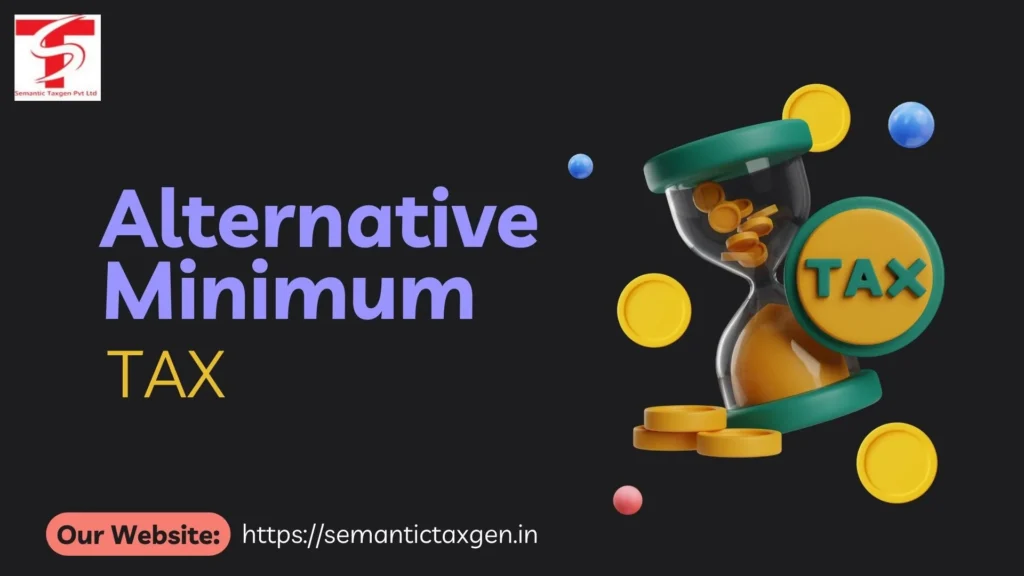
According to this law, which reduces a taxpayer’s regular tax amount by certain tax benefits and significantly for taxpayers. The AMT applies to taxpayers for economic growth in respect of setting a limit on benefits that are received by taxpayers. Which gives surety that taxpayers pay at least a minimum amount of tax.
The AMT is always considered when the tentative minimum tax is more than the regular tax for that year. The regular tax is figured without considering the tentative minimum tax. In general, first, we need to compute the tentative minimum tax by:
AMT exemption amounts and AMT tax rates set by the law. Taxpayers have special rights who can use the special capital gain rates as a result for the regular tax; if they’re lower than the AMT tax rates, then that will be considered for computation. In addition, some tax credits can reduce regular tax liability but not reduce AMT tax liability.
As per the above information, in the beginning the concept of minimum tax was introduced for companies and progressively made applicable to non-corporate taxpayers. AMT is applicable to Limited Liability Partnerships (LLP), which is introduced by the Finance Act, 2011. The Finance Act, 2012, introduced some amendments; now, finally, with all amendments, AMT is applicable to individuals and non-corporate taxpayers. Appropriately, AMT provisions are applicable to the following taxpayers:
Every other person (other than an individual, HUF, AOP, BOI, or artificial juridical person), irrespective of its income. But these taxpayers should pay AMT only when they claim the below deductions under the Income Tax Act:
Chapter VI-A under the heading “C.—Deductions in respect of certain incomes’ –
These deductions are under Section 80H to 80RRB provided regarding the profits and gains of specific industries such as hotel businesses, small-scale industrial undertakings, housing projects, export businesses, infrastructure development, etc.
But deduction under Section 80P, which provides deduction to cooperative societies, is excluded for this purpose; or
Deduction under Section 35AD: While capital expenditure in assets usually qualifies for depreciation year on year, under this Section 100% deduction is allowed on capital expenditure incurred for specified business such as operation of a cold chain facility, fertilizer production, etc.; or
Profit-linked deduction under Section 10AA: If profit is varying from 100% to 50%, then deduction is provided to units in Special Economic Zones (SEZs).
According to the above information, it can be concluded that AMT provisions are applicable only to those non-corporate taxpayers having income under the heading ‘Profits or Gains of Business or Profession’ (PGBP). Further, as mentioned above, AMT provisions are applicable only when normal tax payable is lower than AMT in any FY. The provisions of the AMT are not applicable to a taxpayer who has considered a concessional tax regime under Section 11BAD or Section 115BAC of the Income Tax Act 1961.
AMT provision will not be applicable to those taxpayers if annual income is less than Rs. 20, 00,000:
So, LLPs, partnership firms, and other non-corporate assessee are not eligible for this exemption based on a monetary threshold of adjusted total income.
However, AMT was introduced to collect tax from zero tax companies; it was also with the intention of having a consistent flow of tax to the public fund. Therefore, while minimum tax is being levied in an FY wherein normal tax is lower than AMT, in subsequent FYs wherein AMT is lower than normal tax, AMT paid earlier is allowed to be carried forward and reduced against normal tax to the extent of the difference between normal tax and AMT. Balance, if any, after such a set-off can be carried forward to subsequent FYs. This concept is called AMT Credit.
However, AMT credit is not allowed to be carried forward for only up to 15 FYs succeeding the FY in which such AMT is paid. In case of any change in normal tax due to any order passed by the income tax department, AMT credit will also change accordingly. Further, if the taxpayer has any foreign tax credit (tax paid in foreign countries with which India has a bilateral or unilateral tax agreement) to be claimed against AMT, if have any FTC which is excess of AMT shall be ignored.
There are the following conditions that have to be satisfied by taxpayers for AMT claims:
The assessee can also set off bought-forward AMT credit during the financial year in which the total adjusted income does not exceed Rs. 20 lakhs after claiming deduction under Section 10AA, Section 35AD, or Chapter VI-A.
All taxpayers have to take a report from the Chartered Accountant, if applicable, with the provision of AMT. They then only need to obtain a report from the CA certifying that adjusted total income and AMT have been computed as per the provisions of the Income-tax Act in Form No. 29C and they need to furnish the report on or before the due date for filing the return of income. They can file the report electronically with an income tax return.
To Receive or Inquire about the NGO Taxation services check out our website: https://ngopilot.in/
DISCLAIMER: The information provided in this article is intended for general informational purposes only and is based on the latest guidelines and regulations. While we strive to ensure the accuracy and completeness of the information, it may not reflect the most current legal or regulatory changes. Taxpayers are advised to consult with a qualified tax professional or you may contact to our tax advisor team through call +91-9871990777 or info@semantictaxgen.in.
© 2013-24 Semantic Taxgen Pvt Ltd - All Rights Reserved